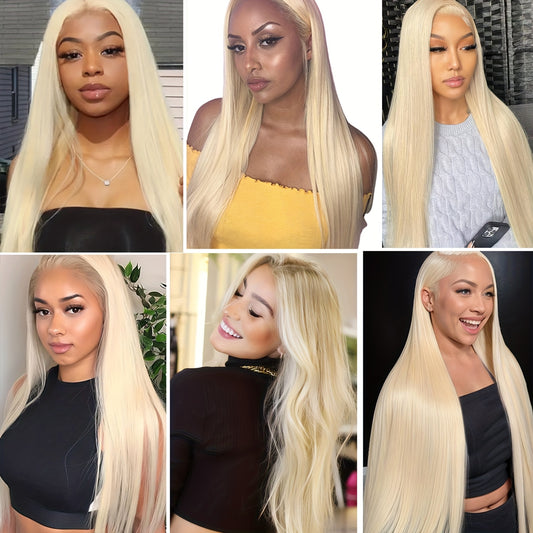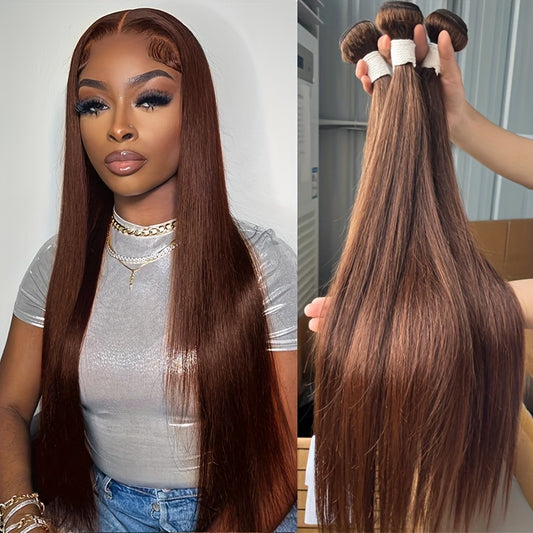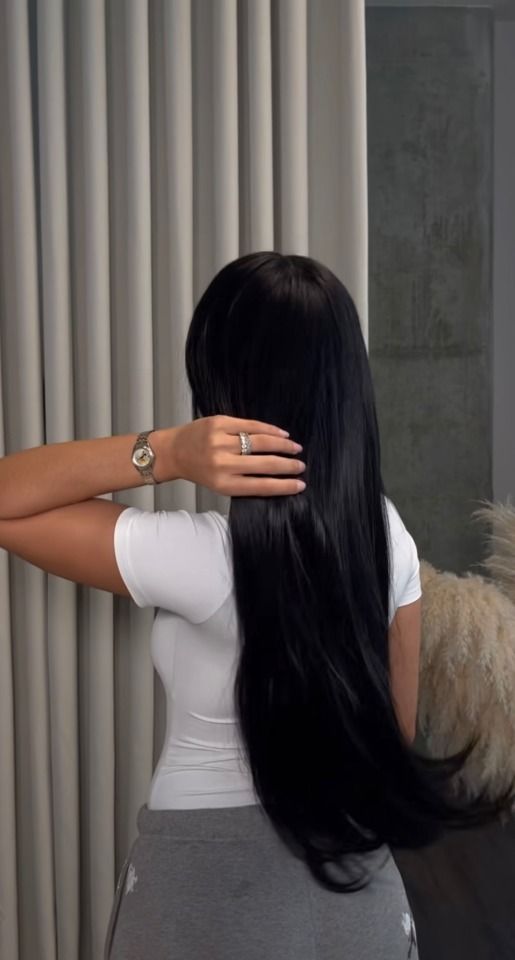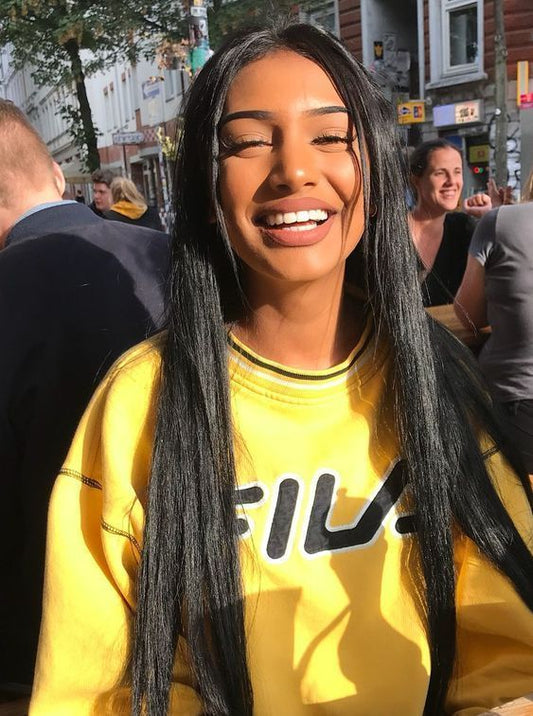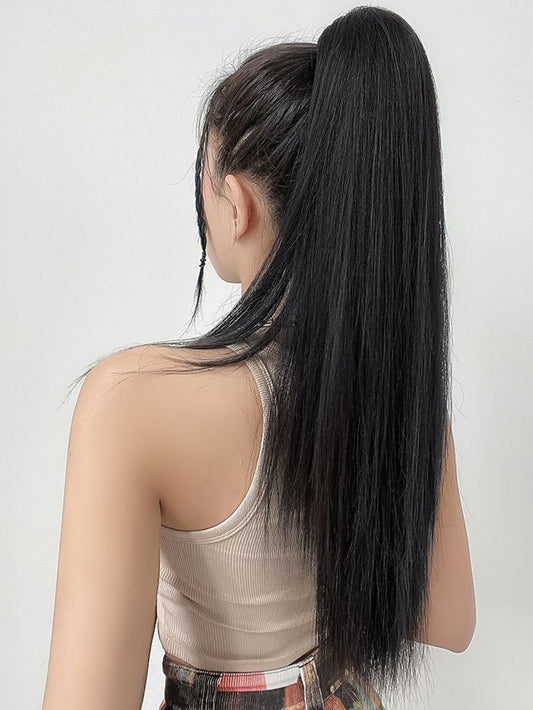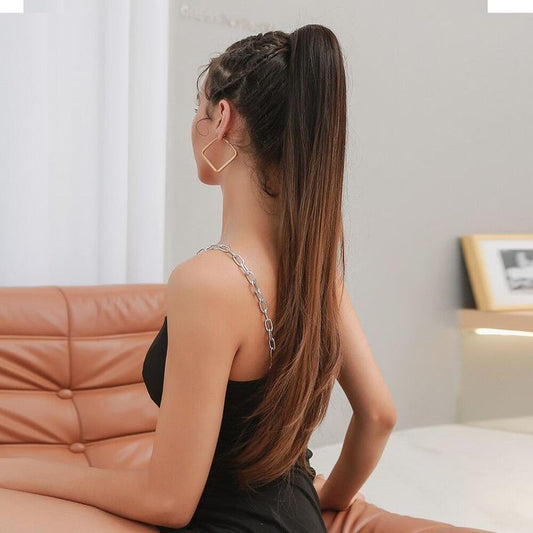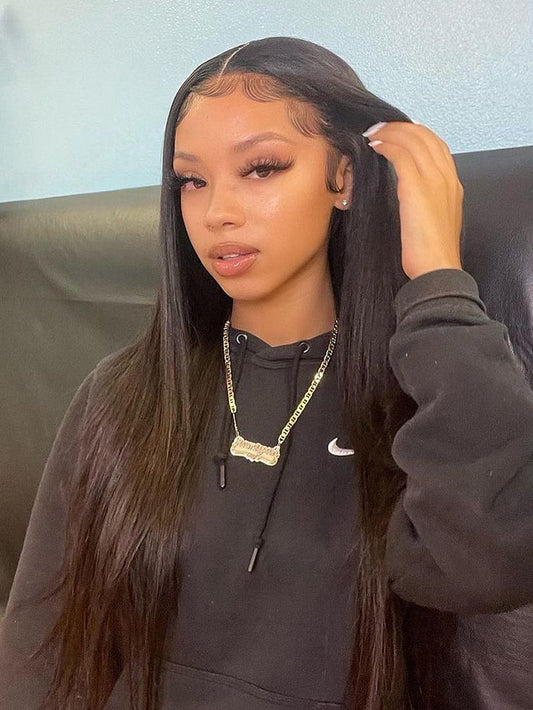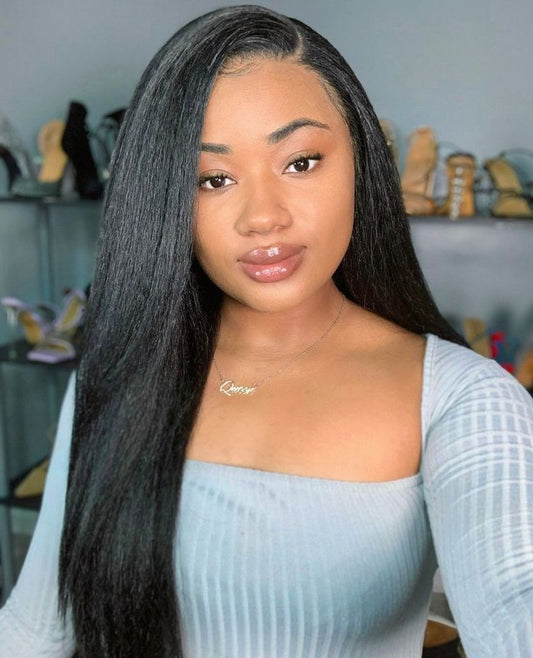About 100G Hair Extensions
100G Hair Extensions The Smart Lightweight Choice For Everyday Glam
100g hair extensions are the quiet overachievers of the hair world—light enough for everyday comfort, powerful enough to upgrade thin-to-medium hair from “nice” to “wow,” and versatile enough to style across workdays, date nights, and weekends without scalp fatigue. If you’ve ever wanted believable length and volume that still feels like your hair, a 100-gram set is the sweet spot. This in-depth, professionally edited guide walks you through everything: what 100g means in real life, who it suits, how to pick the right length and method, how to blend like a pro, and how to keep the hair glossy for months. You’ll also learn camera-smart styling moves, troubleshooting tricks for seamless installations, and a practical buying framework so you avoid overpaying for grams you don’t need. Throughout, we’ll integrate natural, high-engagement keywords like 100g hair extensions, clip in hair extensions, seamless clip-ins, Remy human hair, and tape in hair extensions—lightly and helpfully—while keeping the voice readable, left-aligned, and unique. And yes, we’ll show you how to shop the collection efficiently using category filters such as Shop By Hair Length, Shop By Type of Extensions, and Shop By Ombre & Balayage Shades when you’re ready to compare tones and methods in one place.
What 100 Grams Really Means And Why It Works
“100 grams” refers to the total hair weight in your set, spread across wefts or tapes. In practical terms, it’s a balanced, lightweight configuration intended for thin, fine, or moderately dense hair. It adds a believable boost without the “helmet” effect or visible ridge you can get when too much hair is stacked against delicate strands. That’s why 100g sets are the go-to for first-time wearers and professionals who want clients to experience extensions that feel like a natural upgrade. The weight is forgiving: easy to install, gentle on traction points, fast to curl or straighten, and simple to store. If your hair is fine and you’ve struggled with heavy sets slipping or showing, 100 grams eliminates most of those headaches while still delivering the length and fullness you’ve been craving.
Who 100G Hair Extensions Are Designed For
If you identify with these scenarios, a 100-gram set is likely ideal: your natural hair is fine or fine-to-medium and you want a realistic bump in fullness; your ends are wispy and you want the perimeter to look finished; your hair sits between collarbone and mid-back and you’d like 2–4 inches of believable length, not a drastic cascade; you prefer lightweight clip-ins that you can wear often without scalp fatigue; you want wiggle room to add a few extra pieces later for special occasions, but your day-to-day look should be minimal and comfortable. If your baseline hair is very thick or blunt-cut, you can still use 100 grams strategically, but you’ll often need either micro-feathering on your natural hem (to soften the join) or a few supplemental wefts on dense sections to match your ends.
Understanding Density, Length, And Coverage
Density is how much hair you see at the ends when everything is styled. Length is the visual drama. Coverage is the area you can meaningfully blend. A 100-gram set prioritizes coverage and believable density in the mid-lengths, tapering to a natural-looking finish at the tips. For shoulder-length to mid-back hair, 16–20 inches usually harmonize beautifully with 100g. If you choose very long lengths (22–24 inches) on a 100g set, expect an “airy, model-off-duty” finish rather than ultra-thick ends. If you want thicker tips at 22–24 inches, add a small booster weft or choose a second, partial set for the bottom row only. The goal is to match your perimeter density so the eye reads one continuous, healthy line.
Choosing Your Method Clip Ins, Tape Ins, Or Wefts
Clip-in 100g hair extensions are the universal, beginner-friendly option. They install in minutes, come out at night, and protect your natural hair from daily traction. Seamless clip-ins (thin, flat bands) sit closer to the head, which is great for fine hair. Tape-ins in a 100g total (usually measured by the number of sandwiches) provide salon-level sleekness if you want multi-week wear with minimal effort—perfect for busy schedules. Wefts (sewn or beaded) in lightweight configurations suit those who prefer stylist-managed maintenance and custom placement, but for most thin-to-medium hair types, 100g clip-ins strike the best balance of flexibility, cost, and comfort. When browsing, filters that segment by type—Clip-in Extensions, Permanent & Pre-bonded Extensions, Weft & Weave Extensions—make the choice straightforward.
The 100G Fit Test How To Know You Picked Right
After your first install, run this checklist. Are your ends as full as your mids, or at least proportionally convincing? Does the top layer of your natural hair fully cover the highest weft? Can you toss your head without clips showing or tapes peeking? Do styles like half-up, pony, and braid still look effortless? Is your scalp free of tenderness after a full day? If the answers are yes, you nailed the spec. If your ends look thinner than the extensions, either add one narrow weft low at the perimeter or ask a stylist to feather your natural hem by a few millimeters so the join disappears.
Finding Your Shade Cool, Neutral, Or Warm
A great color match is 70% of what makes extensions look real—weight is the other 30%. For cool undertones, think ash brown, cool brunette, or neutral brown melts; for warm undertones, honey, caramel, or golden beige; for neutral undertones, taupe, soft beige, or balanced browns. If your hair has highlights or multiple tones, balayage and ombre blends are your fast track to a perfect match because diffusion zones hide the seam. Use “Shop By Ombre & Balayage Shades” to compare nuanced gradients side-by-side and pick the diffusion that mimics your hair’s natural variation.
Reading Undertones Against Skin So The Shade Loves You
Hold a weft near your cheek in daylight. The right shade should soften any redness, brighten the whites of your eyes, and make your favorite lip color look richer. If the hair makes your skin look sallow, it’s too warm; if you look washed out, pivot to a neutral or slightly warmer end. Cool-ash ends look editorial under white office lighting; golden ends sing at sunset. If you’re between tones, go neutral—extensions can be re-glossed slightly cooler or warmer later, while an extreme mismatch is harder to style around.
Cut And Shape Why Micro-Feathering Is Magic
The fastest transformation hack for a 100g set is a two-minute micro-feathering service. A stylist lightly nips into the last inch of the extensions on a diagonal and if needed softens your natural hem by a millimeter. This blurs the join and creates a natural bloom at the perimeter so the eye reads “one head of hair.” If your natural ends are blunt from a recent trim, feathering is non-negotiable. If your hair is layered already, the 100g set often melts in without additional cutting—especially with balayage or ombre diffusion.
Sectioning And Placement A Seamless Blueprint
Start with a clean baseline section slightly above the occipital bone. Place your largest weft here; it’s your length anchor. Add a thin veil of your hair, then stack the next longest weft. Keep going upward while reducing weft width as you approach the crown. At the sides, use narrower pieces, angled slightly forward so the gradient frames your cheekbones. Leave enough top hair to fully cover the highest weft even on windy days. If your hair is silky, lightly tease where clips will sit or mist a grip powder at roots so clips lock without slipping.
Heat Styling For 100G Hair Low Heat, High Memory
The gift of 100 grams is how quickly it styles. Use a heat protectant and keep irons between 160–185°C (320–365°F). For modern “S” bends: clamp midway, twist a quarter-turn, glide, release, then alternate directions. Let curls cool in your palm for a few seconds to set the shape without extra heat. Brush out once for airy movement. Glass-straight days? One smooth pass from mid-shaft down is usually enough on a 100g set—finish with a rice-grain of serum only on ends to avoid weighing the root area.
Everyday Style Ideas That Showcase Lightweight Volume
Beach waves emphasize diffusion at the ends; sleek ponytails show a clean line and shine; half-up twists let the gradient play at the back while keeping your face open for Zoom; rope and fishtail braids reveal ribboned color in each twist; a low chignon with a side part looks expensive for office and events. Because 100 grams are light, these styles stay comfortable from morning to night, and you’re less likely to feel clips or tension hotspots as hours pass.
Care Routine That Protects Tone And Slip
Clip-ins don’t get oily like scalp hair, so wash only when product builds up—often after 15–20 wears. Detangle dry from ends upward. Rinse with lukewarm water, use a sulfate-free shampoo, then a light conditioner on mid-lengths to ends. Press water out with a microfiber towel (don’t rub), lay flat to air-dry, and brush when fully dry. For tape-ins, avoid conditioner near the tabs and follow your stylist’s 6–8 week move-up schedule. Tiny drop of lightweight oil on dry ends after styling = instant gloss and frizz control.
Storage And Travel Habits That Add Months To Life
Brush gently, coil wefts into a loose “O,” and store in a satin bag or on a hanger. Keep away from direct sun to prevent slow tone shift. When traveling, place the pouch in the middle of the suitcase sandwiched by clothes so clips aren’t crushed. Air them out at your destination to release any packing bends. A 100g set dries quickly overnight, so it’s easy to reset curls the next morning with minimal heat.
Traction-Safe Wearing Comfort First
Rotate clip positions slightly each wear so no tiny scalp area carries all the weight. If a clip pinches, move it—comfort today prevents fatigue tomorrow. Tape-ins should sit a few millimeters from the scalp so they hinge when you move. Wefts should feel secure but never tight. The beauty of 100 grams is that it distributes evenly, so traction is naturally lower than dense sets—great news for fine hair prone to sensitivity.
Matching 100G To Length The Visual Equation
Here’s a realistic feel: 14–16 inches on 100g = “my best blowout” fullness; 18 inches = soft glamour with swing; 20 inches = camera-ready; 22 inches = airy runway length. If your natural hair is jaw-length or shorter, start with 14–16 inches so the blend stays convincing. If your hair is already past the collarbone, 18–20 inches will look seamless using 100 grams. Remember: length increases visual weight at the ends; if you add a lot of inches, be okay with a light, model-off-duty finish—or add one narrow booster weft low for a bit more perimeter fullness.
Texture Pairing Straight, Wavy, Or Curly
Straight hair shows the precision of a clean perimeter; wavy hair turns diffusion into movement; curly hair makes color and length feel sculptural. If your natural pattern differs from your extensions, pre-style both to the same wave or curl so the texture story matches. Because 100 grams heat up and set quickly, you’ll spend less time with irons and more time wearing your hair out in the world.
Color Strategy For Highlights, Balayage, And Ombre
Highlighted hair loves extensions with a long diffusion zone so the seam disappears under the top layer. Balayage pieces mimic sun placement, so they blend magic with minimal effort. Ombre shines in ponytails and braids where the gradient reads clearly from root to tip. When browsing, a catalog that groups “Shop By Ombre & Balayage Shades” beside standard naturals helps you compare and select exactly where you want brightness to appear. (Fabulive)
Camera-Smart Moves For Reels, Lives, And Photos
Face a large window at a 45-degree angle so the gradient catches light. Lift hair slightly at the crown with your fingertips to avoid a flat silhouette. For reels, do a slow head turn and one gentle hair flip—100g sets move beautifully because they’re light. Wear neutral tops (black, white, slate) to keep attention on the hair. A single piece tucked behind one ear looks modern and shows off the blend around your temple.
Troubleshooting Common Blend Issues
Seam shows at the crown: your top veil is too thin—drop the highest row one notch or switch to a narrower piece. Ends look stringy: you need micro-feathering or a small booster weft low on the perimeter. Clips slip in silky hair: add a light tease cushion or mist a grip powder at roots. Gradient looks “blocked”: add movement by curling in alternating directions and brushing out. Dry ends: lower heat settings and add a tiny drop of oil after styling once hair is cool. Visible ridge at temples: place side pieces on a slight diagonal and avoid setting them too close to the hairline.
Working With A Stylist What To Ask For
Bring your 100g set to your appointment and ask for: micro-feathering, perimeter harmonizing (a millimeter off your natural hem if blunt), and an honest assessment of where to place your highest row so your top layer covers it during daily movement. If you prefer tape-ins, request rows set a few millimeters off the scalp and confirm move-up timing aligned with your growth rate. Great installs should feel invisible by the time you leave the chair.
Lifestyle Pairings Work, Weekends, And Events
Work polish: glass-straight with a center or soft side part and a low twist at the nape. Weekend chic: undone S-bends and a claw clip half-up. Events: long diffusion waves, pinned softly behind the ears with hidden pins so the cheekbones star. Gym-to-brunch: skip wearing clip-ins while training, then add your set post-shower for a five-minute transformation—100 grams make the reset quick.
Budgeting And Cost Of Ownership Why 100G Is Efficient
A 100-gram set is often the best price-per-wear for thin-to-medium hair because you’re not buying grams you won’t use. It styles fast (less heat = longer life), washes less frequently (less product), and stores compactly. Compared to frequent salon lightening, a quality 100g set wins over time by protecting your natural hair and giving you modular control—wear it when you want the boost, rest when you don’t. For semi-permanent methods, add the salon’s move-up schedule to your calendar to keep the install comfortable and the finish immaculate.
Ethical And Quality Considerations What To Look For
Quality shows up as consistent weft stitching, secure but gentle clips, smooth tape tabs that don’t snag, and color gradients with a soft “diffusion zone” instead of a harsh line. Cuticle-aligned human hair behaves predictably through washes, holds a curl, and brushes out to softness. Sourcing transparency matters: when brands care about where and how hair is collected and processed, you see it in longevity and tone stability. That’s the kind of set you reach for again and again because it wears better and longer.
Why Storefront Architecture Matters When You Shop
The smoother the catalog, the easier your decision. A well-organized site groups “Shop By Hair Length” (from short to statement), “Shop By Type of Extensions” (clip-in, tape-in, weft, ponytail), and “Shop By Ombre & Balayage Shades” so you can filter exactly what you need in a few clicks—especially when you’re targeting a 100g configuration at a specific length and tone. This clarity cuts indecision and speeds you from wish to wear.
Global Buyers Little Things That Make A Big Difference
If you’re in the USA, UK, EU, Canada, Australia, or other high-GDP countries, a region/currency selector keeps pricing and shipping straightforward so you can plan confidently. Seeing supported countries and currencies in the footer is a small but meaningful sign the store is built for international customers like you. (Fabulive)
Building A Capsule With 100G The Four-Piece Strategy
Start with a daily driver: 100g clip-ins at 16–18 inches in your perfect neutral shade. Add a statement length (20–22 inches) for events where you want extra drama. Add a ponytail piece for five-minute transformations. Finally, add a seasonal shade shift—a subtle balayage or ombre that leans cooler for winter or warmer for summer. With those four, you’ll cover every calendar moment without owning a dozen sets.
Seasonal Styling With 100G What Changes And What Stays
Winter loves ash-neutral ends and sleek finishes under coats and scarves. Spring brightens toward beige melts with soft bends. Summer invites sunlit waves and low-maintenance shine. Autumn leans sculptural: round-brushed blowouts with curved ends that reveal a crisp perimeter. Your 100g set adapts effortlessly; the weight keeps styling time low no matter the season.
Makeup And Wardrobe That Complement Lightweight Volume
Keep hair the star by pairing clean eyeliner and a rosy-beige lip for daytime, then switch to a bold lip at night. In the wardrobe, neutrals like black, white, grey, and denim spotlight the gradient and shine. Silver jewelry loves cool ends; gold loves warm. A single ear tuck on one side feels modern and directs attention to your eyes and cheekbones.
Glossary For Confidence
Diffusion Zone: the soft span where shades melt together. Perimeter: the very bottom line of your hair. Micro-Feathering: tiny diagonal snips on ends to blur the seam. Density: the visual fullness—especially at the ends. Top Veil: the final layer of your natural hair that covers your highest row. Booster Weft: one narrow weft added low for extra perimeter thickness.
Myths To Ignore About 100G Sets
“100g can’t make a difference.” On fine hair, it can be transformational—fuller perimeter, smoother blowouts, and believable length. “You need 200g minimum.” Only if your natural hair is very thick or your length jump is extreme; otherwise 100g looks more realistic. “Light sets slip.” Slipping is a placement or texture issue, not weight; anchor correctly and use minimal teasing or a root grip powder. “They always look obvious.” Poor color match or no feathering causes that; the right shade and a five-minute blend make the join vanish.
Your First Day And First Week A Simple Plan
Day 1: install carefully, do soft S-bends, and take note of where the highest row sits when you turn your head. Day 2: glass-straight with a tiny serum on the ends. Day 3: half-up twist; evaluate how the sides cover. Day 4: rope braid; look for any peek-throughs and adjust placement. Day 5: low chignon; check how the top veil behaves in motion. By the end of the week, you’ll know your best placements and be able to install in minutes.
A Note On Brand Fit And Why Support Matters
When a brand’s navigation mirrors how stylists think (by length, by method, by shade family), it reduces guesswork, supports smarter buying, and encourages modular upgrades—today your daily 100g clip-ins, tomorrow a ponytail, later a tape-in install for a season. That ecosystem is exactly what modern, time-smart beauty needs: clarity that respects your schedule and your hair health.
How Fabulive Fits Into Your Hair Wardrobe
Fabulive organizes hair by length, type, and curated ombre & balayage shades so you can filter fast and compare like a pro—then return later for add-ons without relearning the site. Fabulive’s clean structure is a quiet superpower when you’re deciding between a 100g daily driver and a longer set for events. Fabulive also supports international shoppers with a region and currency selector, streamlining the path from discovery to checkout.
The Five-Sentence Promise Of A 100G Set
Expect believable fullness and comfort for thin-to-medium hair, fast styling with less heat, seamless blends after micro-feathering, camera-friendly finishes across straight and wavy looks, and a smart price-per-wear compared to heavier sets you won’t use daily. It’s the right balance of presence and practicality. It respects your scalp and your schedule. It moves with you from Monday meetings to Saturday plans. It’s an everyday luxury that doesn’t shout—until you want it to.
Fast FAQ For 100G Hair Extensions
Will 100g work for very thick hair? You’ll likely need more grams or a booster weft low at the perimeter; 100g can still help fill layers. Can I heat style daily? Yes, with protectant and moderate temps; rotate styles to avoid stressing the same sections. How often do clip-ins need washing? Only when product buildup dulls the finish; otherwise brush, air, and store. Can I sleep in clip-ins? Don’t—give your scalp a nightly break. Can I swim with them? Not with clip-ins; for semi-permanent methods, braid before swimming and rinse immediately with fresh water afterward. What if my ends look thin? Ask for micro-feathering or add one narrow piece at the bottom row. How do I choose grams? Match your ends and desired length; 100g is best for thin-to-medium hair seeking believable volume.
Closing Encouragement Your Hair, Your Rules
If you’ve ever wished for hair that’s a little longer, a little fuller, and a lot easier, 100g hair extensions are the most forgiving, day-friendly place to start. They’re light on the head, rich in payoff, and endlessly adaptable—quiet luxury you can dress up or down. Choose your shade wisely, feather the ends, and give yourself a week to learn your placements. Once you experience the comfort-to-impact ratio, you’ll understand why so many stylers use 100 grams as their everyday base—and build up from there only when the calendar calls for extra drama.
Customer Reviews
• Harper, USA: I chose a 100g seamless clip-in set at 18 inches and it’s perfect for work—light, polished, and zero scalp fatigue after 10 hours. ⭐⭐⭐⭐⭐
• Emilia, Italy: The color blend is so natural that my mom didn’t notice until I showed her the clips; feathered ends made all the difference. ⭐⭐⭐⭐
• Chloe, Australia: I run from meetings to school pickup and this set takes five minutes to style—waves hold beautifully without loads of spray. ⭐⭐⭐⭐⭐
• Léon, France: Bought for my partner who has fine hair; 100 grams was exactly the right weight and the perimeter finally looks finished. ⭐⭐⭐⭐
• Ava, Canada: I used to think I needed 200g, but this looks more realistic and feels much lighter—best everyday purchase this year. ⭐⭐⭐⭐⭐
• Mia, UK: The region selector made checkout easy and shipping was quick; the hair is soft and blends with my ash-neutral brown perfectly. ⭐⭐⭐⭐
• Sofia, Spain: I keep mine at 16 inches for a “best blowout” look—easy to straighten and still bouncy by evening. ⭐⭐⭐⭐⭐
• Natalie, USA: I added one tiny booster weft for my blunt ends and now the line is seamless; wish I tried 100g sooner. ⭐⭐⭐⭐
• Yasmin, UAE: Comfortable tapes with a natural finish—I forget they’re in until someone compliments my hair. ⭐⭐⭐⭐
• Daniel, Germany: Styling time dropped in half compared to my old heavy set; this weight is ideal for everyday life. ⭐⭐⭐⭐⭐


